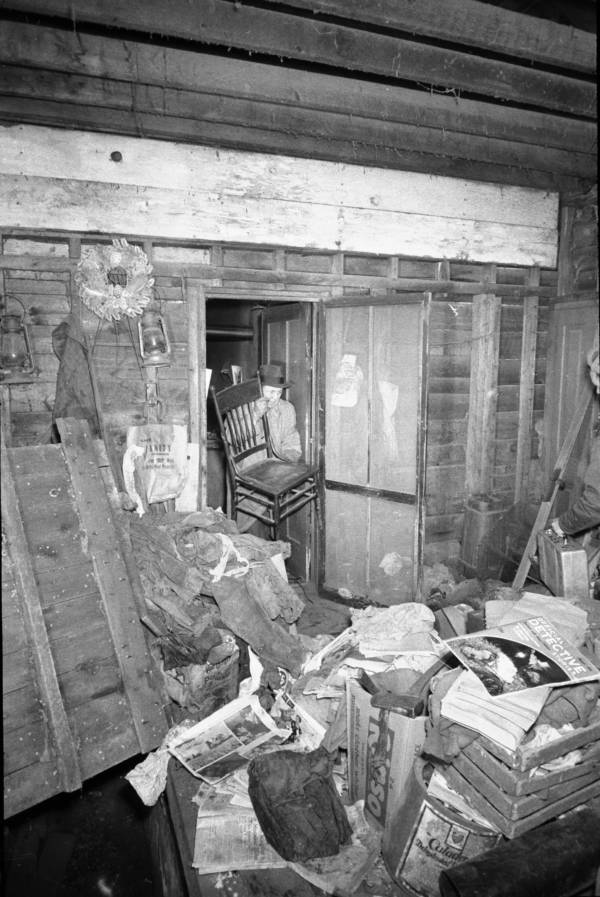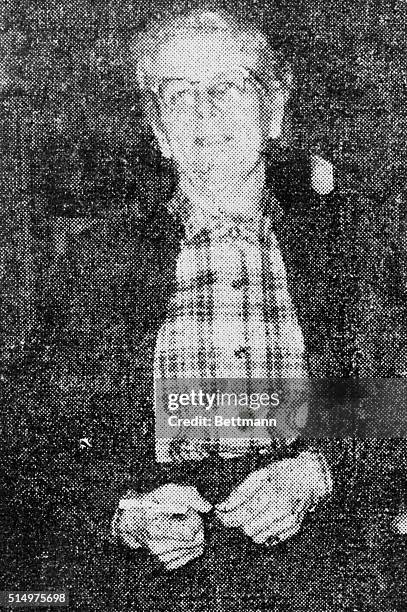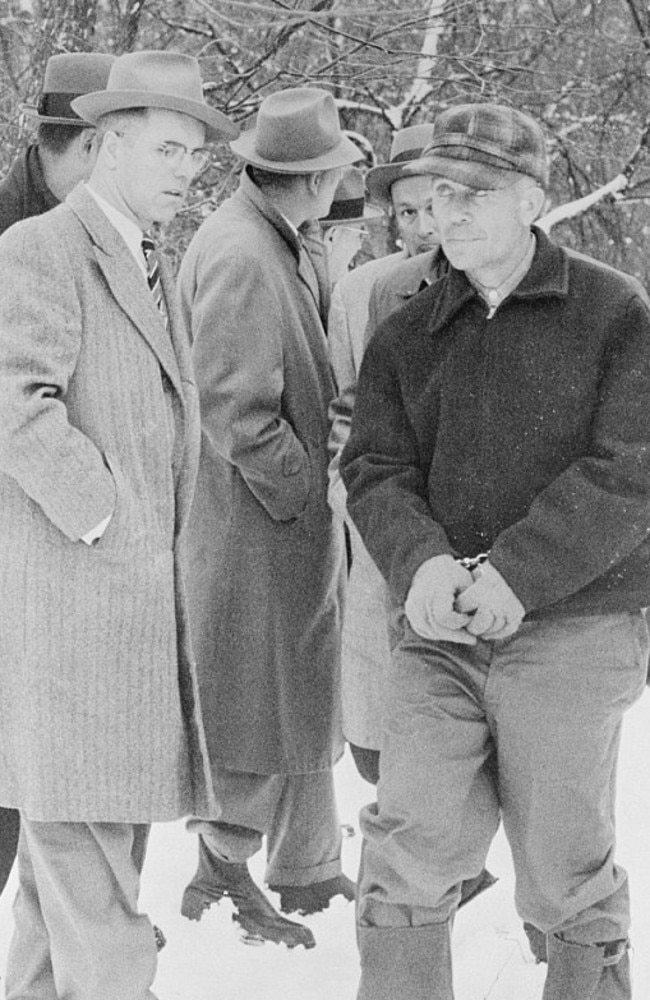How could a man transform into such a monstrous figure that his actions would inspire some of the most chilling horror films in cinematic history? Ed Gein, a name synonymous with depravity and madness, left an indelible mark on the annals of crime. His dark legacy continues to haunt our collective consciousness, not merely as a historical footnote but as a grim reminder of humanity's capacity for evil. A bold statement underpins this inquiry: Ed Gein was more than just a killer; he was a harbinger of psychological terror whose exploits transcended the confines of reality and seeped into popular culture.
In November 1957, law enforcement officials entered a decrepit farmhouse nestled in Plainfield, Wisconsin, uncovering horrors that defied comprehension. The grisly artifacts found within its walls painted a macabre portrait of a mind warped beyond repair. Among these items were human skulls mounted on posts, furniture upholstered with human skin, and even a belt crafted from nipples. These discoveries sent shockwaves through the nation, catapulting Ed Gein into infamy as one of America's first documented serial killers. Yet, his crimes extended far beyond murder. Grave robbing became his twisted hobby, exhuming bodies to create grotesque trophies and perform acts of necrophilia. This bizarre fixation earned him the moniker The Butcher of Plainfield and inspired characters like Norman Bates in Alfred Hitchcock's Psycho and Leatherface in The Texas Chain Saw Massacre.
| Bio Data & Personal Information | Career & Professional Information |
|---|---|
| Full Name: Edward Theodore Gein | Occupation: Farmer |
| Date of Birth: August 27, 1906 | Known For: Serial Killer, Grave Robber |
| Place of Birth: La Crosse, Wisconsin | Convictions: First-degree murder (Bernice Worden) |
| Death: July 26, 1984 (age 77), Fort McCoy, Wisconsin | Sentence: Life imprisonment (declared insane) |
| Family: Son of Augusta and George Gein | Reference: Learn more about Ed Gein at History.com |
Gein's upbringing played a pivotal role in shaping his psyche. Raised by an overbearing mother who instilled puritanical values and fostered paranoia about the outside world, he led a reclusive life marked by isolation. Following the deaths of his father and brother, Ed became increasingly dependent on his mother, Augusta, whose death in 1945 effectively severed his last tether to normalcy. Bereft of familial ties and social connections, Gein spiraled into darkness, turning to graveyards as a source of solace and obsession.
The investigation into Gein's crimes revealed a meticulous individual who meticulously documented his activities. Law enforcement discovered notebooks detailing his nocturnal excursions to local cemeteries, where he unearthed corpses for anatomical study and artistic endeavors. His fascination with human anatomy manifested in disturbing creations—skulls displayed like trophies, facial masks fashioned from peeled skin, and even a corset stitched together from human flesh. These morbid artifacts served as both testament to his deranged creativity and evidence of his pathological mindset.
Despite confessing to multiple murders, including those of Bernice Worden and Mary Hogan, Gein's trial hinged on questions of sanity rather than guilt. In 1968, after being deemed mentally competent to stand trial, he was convicted of first-degree murder for Worden's death. However, due to his psychiatric evaluation revealing severe mental illness, Gein escaped capital punishment and instead spent the remainder of his life incarcerated in mental health facilities. His eventual transfer to Mendota State Hospital underscored the complexities surrounding his case—a blend of criminality and mental disorder that defied conventional justice.
While Ed Gein's story might have faded into obscurity without the advent of modern media, it gained renewed relevance through its influence on popular culture. Filmmakers drew inspiration from his macabre methods, crafting narratives that resonated deeply with audiences eager to confront their fears. Norman Bates' descent into madness paralleled Gein's own journey, while Leatherface's penchant for wearing human flesh masks echoed the real-life atrocities committed in Plainfield. Such adaptations ensured that Gein's legacy endured, transforming him from a mere criminal into a cultural icon synonymous with horror.
Today, visitors to Plainfield can explore remnants of Gein's infamous farmhouse, now preserved as a macabre tourist attraction. Although much of the original structure has been dismantled or destroyed, certain elements remain intact, offering glimpses into the environment that birthed such monstrosity. For many, this pilgrimage serves as a visceral reminder of the thin line separating civilization from chaos—a stark warning against complacency in understanding human nature's darker impulses.
Ed Gein's impact extends beyond mere entertainment value; it challenges us to grapple with uncomfortable truths about ourselves and society. By examining his life and deeds, we gain insight into how environmental factors, psychological trauma, and societal neglect can coalesce into tragedy. As we continue to dissect his story across various mediums, perhaps we may also find ways to prevent similar horrors from unfolding anew. After all, prevention hinges upon comprehension—and Ed Gein's tale offers ample material for reflection.
Crime scene photographs from Ed Gein's farmhouse provide haunting visual documentation of his depraved lifestyle. These images capture the eerie ambiance of his dwelling, where everyday objects like chairs and tables were transformed into instruments of terror. One particularly striking photograph depicts a room resembling a family home, yet imbued with sinister undertones—an unsettling juxtaposition that underscores the duality inherent in Gein's persona. Such visuals reinforce the notion that evil often lurks beneath seemingly ordinary surfaces, waiting patiently to reveal itself.
Ultimately, Ed Gein represents more than just a historical anomaly; he embodies a cautionary tale about unchecked obsession and distorted desires. His transformation from rural farmer to notorious murderer highlights the fragility of human morality when confronted with extreme circumstances. While time may dull the immediacy of his crimes, their resonance persists, serving as a perpetual reminder of the importance of empathy, vigilance, and understanding in combating forces that threaten to unravel the fabric of our shared existence.



